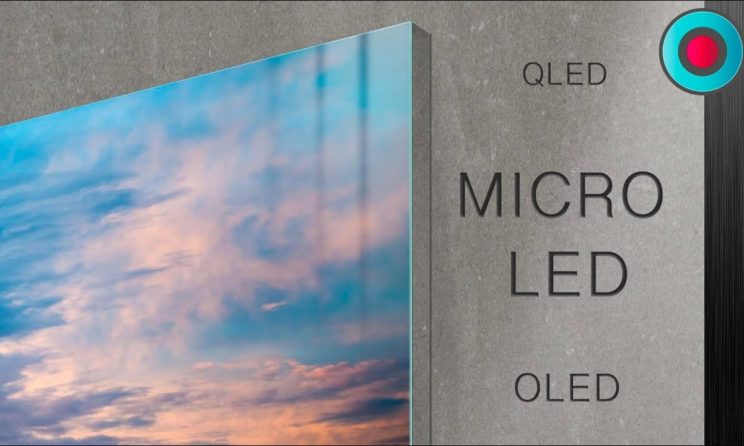
MicroLED vs. OLED: Well, technology is advancing and people nowadays are paying attention to the next generation display technology such as MicroLED and OLED. MicroLED is being latest in the market because of which it has grabbed most of the attention.
Without a doubt, the arrival of Micro LED does steal some of the limelight from OLED that has been leading the television market for the past few years, but the real question is can Micro LED really challenge OLED?
The thing which both these two display technologies have in common is the Self-emission. The traditional LCD displays need LED backlight modules in order to emit light through layers from behind to produce images.
About MicroLED

MicroLED is an emerging flat-panel display technology. It is also known as micro-LED or mLED and microLED displays that consist of arrays of microscopic LEDs forming the specific pixel elements. While comparing it with widespread LCD technology, microLED displays offer you better contrast, response times, as well as energy efficiency.
Along with OLEDs, micro-LEDs are mainly meant at small, low-energy devices like smartwatches as well as smartphones. microLED also offers you greatly reduced energy necessities as compared to conventional LCD systems.
In the meantime, microLED displays have not been mass-produced as of 2019, however, Sony sells microLED video walls, as well as Luumii mass, produces microLED lighting. Samsung, LG, Tianma, PlayNitride along with TCL/CSoT have established the prototypes.
About OLED
An organic light-emitting diode (OLED or Organic LED) is a LED in which the emissive electroluminescent layer is a film of organic compound that produces light in response to an electric current. OLEDs are also used to make digital displays in devices like television screens, computer monitors, portable systems like smartphones, handheld game consoles as well as PDAs.
An OLED display also works without a backlight for the reason that it emits visible light. Therefore, it can display deep black levels as well as it can be very thinner and lighter than a liquid crystal display (LCD).
In a surrounding of low ambient light conditions like a dark room, an OLED screen can attain a higher contrast ratio as compared to an LCD, irrespective of whether the LCD uses cold cathode fluorescent lamps or else an LED backlight.
Difference Between MicroLED And OLED?
Dissimilar from OLED, microLED is based on conventional gallium nitride (GaN) LED technology, that helps in offering way more higher total brightness as OLED get it produced, as much as 30 times, as well as greater efficiency in terms of lux/W. In addition, OLED suffers from screen burn-in, while microLED, on the other hand, does not.
Every single pixel in an OLED display can emit light of a certain color self-sufficiently as well as at the same time it can be switched on and off individually. This is the reason that OLED displays can have notable black level and color contrast. While on the other hand, Samsung’s Micro LED display happens to shares the similar properties as well, so it can certainly achieve effects such as very high contrast, extremely deep blacks, and fast response time.
On the other hand, Micro LED has higher brightness as well as it is more stable than OLED for the reason that of its inorganic nature. In simple words, red, green, and blue Micro LED pixels do not have luminance deterioration concern. Compared with that, every OLED pixel more or less suffers from luminance falloff as well as the speed of decay varies.
Conclusion
Without a doubt, you can find almost all the big names that we can think of in the tech industry that see Micro LED as the next big thing. Samsung launched a gigantic modular display, while Apple, on the other hand, acquired Micro-LED developer LuxVue as well as even filed a patent covering a foldable iPhone sporting a Micro LED screen.
As OLED is made of organic light-emitting materials, not semiconductors, it can be used for a wide range of display types. This in some extent makes Micro LED sound much better than OLED, but, the reality is, OLED is not going to be that easily replaced.
On the other hand, we are not saying OLED is facing a certain bright future but still its good enough to compete with. Before all types of OLEDs turn out to be prevalent, some technologies need to improve and polish. Apart from the battery issues micro OLED displays encounter, how to miniaturize OLED mechanisms is also a concern engineers have to figure out. But at the end by comparing both of them we can say that Micro LED is new but far less mature than OLED, and due to its new arrival, it costs a lot more, as well.






